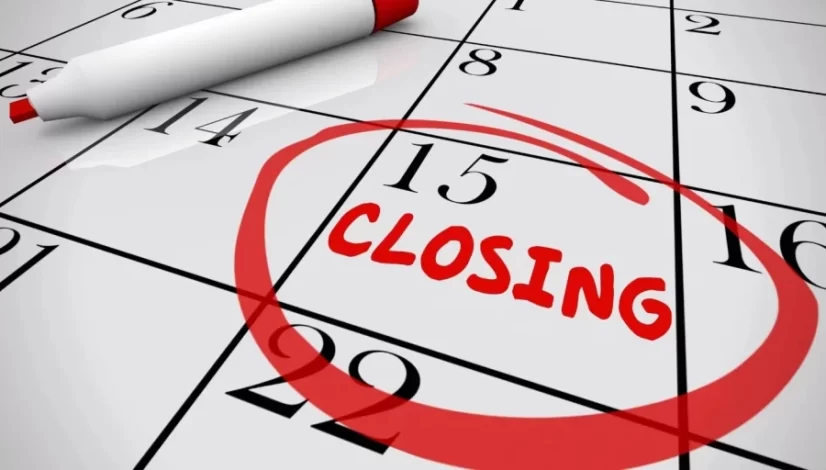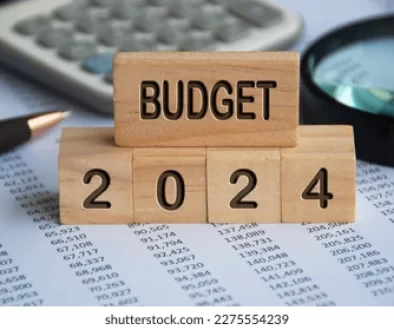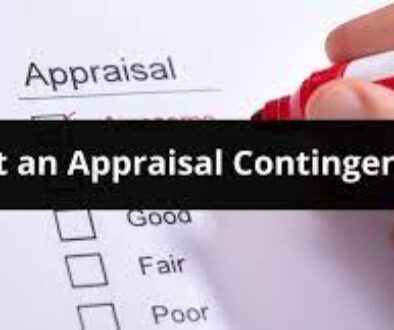Closing Process
Closing Process
Before you start touring homes and submitting offers, you should take the opportunity to learn more about the final stages of the home buying process. Many first-time borrowers might believe that preparing for closing is just for their mortgage lender, but that’s not always the case.
By understanding the next steps of the process, you can help your closing agent complete documents promptly while providing essential information along the way. Our guide will help you know what to expect on closing day and how to prepare ahead of time, so you can get to the table faster and avoid any roadblocks on your path to homeownership.
Overview: The House Closing Process
Closing on a house is the most rewarding part of the home buying experience. And hopefully, you’ll walk into your closing day with all your questions answered, negotiations settled and your mortgage pre-approved. On this day, you should also be ready to become the legal owner of a home.
As the closing date approaches, there will still be much to do to ensure you get to the part where the keys are handed over to you, the new homeowner. Here’s a guide to help you prepare before you even find the perfect house, so you know what to expect down the road.
How Long Does It Take to Close?
On average, it takes about 30 – 45 days to close on a home, from filling out your mortgage loan application to showing up at the closing table. Closing day, the day you sign your final paperwork, lasts about 1 to 2 hours as long as everything goes as planned.
How long it takes to close on a house will depend, in part, on your organization skills, the experience of the loan officer and the reliability of the seller. To learn more about the process, review the following steps to see what you and your lender will need to complete before closing day.
Step 1: Understanding Your Documents
Taking inventory of your closing documents will ensure you and your lender have everything that’s required for closing. It also makes it easier to locate and send any forms requested at the last minute, which can help you avoid holding up the process.
You can even create a list of all the documents you need and the deadlines for turning them in. Check them off as you send them to your lender and mark the date they were sent. You’ll also want to get verification to confirm that they were received. Use this list of common closing documents to start.
Closing Disclosure
As required by law, your lender will send the Closing Disclosure at least 3 business days before closing day. This document lays out, in detail, all of the important information of your loan. That includes:
- Loan term, loan amount and interest rate
- Estimated monthly mortgage payment.
- Closing costs, which include origination, underwriting and government fees
- Amount of money you’ll need to bring to closing, also known as cash to close
- Loan disclosures
Thoroughly reviewing this document is one of the most important steps you’ll take when closing on a house. You’ll want to compare the Closing Disclosure to the loan estimate to make sure there aren’t any discrepancies. If you find an error, contact your lender to correct it. It may delay your closing, but the mistakes must be fixed before you sign the document.
Seller’s Disclosure
A Seller’s Disclosure is a document that the seller is legally required to fill out to list all of the known defects of the property, which could influence your decision to purchase the home. Depending on the disclosures your state requires, these defects may include repair history, water damage, foundation issues, infestations, lead paint or malfunctioning systems.
Read the disclosures carefully, as there could be major issues you may not have noticed on your final walkthrough of the home. This is one of the last chances you have to learn more about the home before making that big purchase – there’s usually a “no-return policy” on houses. Seller’s disclosures can help you save thousands of dollars or even help prevent buyer’s remorse.
If there are any red flags on the disclosures, request more information from the seller or have a home inspector look more closely at the specific issues. You’ll want to get as much information as you can to determine whether the home is worth the time, money and stress involved in fixing or living with the particular issue.
It’s important to note that not all states have legally mandated seller disclosures, so be sure to speak with a real estate agent about what’s required in your area. If you still wish to proceed with the purchase of the home, you could consider negotiating with the seller to have them pay for the repair or take the cost to fix it yourself off the purchase price.
Title Documents
During the closing process, a title company, working in the interest of you and your lender, will perform a title search to ensure the seller owns the right to the property and can legally sell you the home. The company also looks for existing liens on the house to prevent new homeowners from getting hounded by the previous owner’s lenders for unpaid debts.
A real estate attorney or escrow company will review the title documents to ensure the title is as expected. Typically, the seller owns the rights to the home, and there will be no existing liens or other concerns on the title.
Loan Application
When you apply for your home loan, your lender creates a copy of your original application for closing. You’ll need to review it for accuracy and let your lender know if there have been any changes since first applying. For example, any job changes or new debts must be disclosed to your lender as it can affect the terms of your loan.
Step 2: Selecting A Homeowners Insurance Plan
Most lenders require buyers to get a homeowners insurance plan for the new home and show proof of this insurance just before or during closing. The cost of your insurance plan will depend on the features and condition of your home, what you choose to have covered and how much you’re willing to pay for a homeowners insurance deductible.
Step 3: Preparing Your Finances for Closing Day
Your Closing Disclosure should spell out what you’ll need to pay on closing day, but here’s a quick rundown of various expenses that may be paid by you, your lender or the seller.
Closing Costs
Closing costs are the fees paid to your lender and other third parties to close on your loan. They’re typically around 2% – 6% of the purchase price of the home and include several fees, like the appraisal, origination, title insurance and application fees. You may also have to pay mortgage insurance depending on the type of loan you get and how much you put down.
Keep in mind that closing costs are not the same as prepaid costs.
Earnest Money
Earnest money is the money you put down to show the seller you’re serious about buying their home and protects the seller if you were to back out of the deal. The money is held in an escrow account until the deal is completed, then applied to your down payment or closing costs.
Lender Credits
Lender credits are provided by the lender to absorb your closing costs in exchange for paying a higher interest rate. This could be a good option for cash-strapped buyers who may not have a ton of money to pay closing costs. However, a higher interest rate means you’ll pay more in interest over the life of the loan.
Cash To Close
Cash to close is the total amount of money – closing costs included – that you need to bring on closing day. Your down payment makes up much of your cash to close. Depending on your loan, your down payment could be as little as 3% or as high as you wish. If you have a government-backed loan, like a USDA or VA loan, you may not have a required down payment.
If you’ve already made certain payments to your lender (including your earnest money deposit), you may receive credits – or a deduction in your cash to close.
Seller Concessions
Sometimes a seller will agree to pay part or all of your closing costs. If you’ve negotiated to have the seller pay some of your closing costs, remember to factor in those seller concessions.
Dry Closing
A dry closing happens when all parties agree to proceed with the closing even though the disbursement of funds will happen after the closing instead of during it. All other requirements to close on the loan are still fulfilled at this closing. Until the seller receives their funds, they remain the owner of the property. Buyers won’t legally own the property until their mortgage is funded.
Step 4: Planning What to Bring to the Table
Most of the closing documents you’ll review and sign on closing day will be provided to you at closing. There are some items you will need to bring on closing day. To make sure you don’t forget anything on such an exciting day, create a list and check off your items as you pack them. Start your list with these required items:
- A form of identification, like a driver’s license, passport or government-issued photo ID
- A certified or cashier’s check in the amount of closing costs due or proof of a wire transfer (cash and personal checks are not usually accepted)
- Your Closing Disclosure to compare to final paperwork.
- Proof of your homeowner’s insurance
You should also bring a list of important contacts in case any issues come up. This may include your real estate agent or attorney, if they’re not present at closing.
How To Avoid Common Roadblocks to Closing
You won’t be able to avoid some roadblocks that may be out of your control, like a title search revealing a lien against the home, an appraisal coming in lower than expected or a home inspection turning up an unknown issue with the property. However, there are other delays that are in your control and that you can avoid.
Complete Lender Requests As Soon As Possible
Financial issues are one of the most common causes of delay that the buyer can control. They can happen when a buyer is late turning in such required financial documents as bank statements, tax returns or paycheck stubs.
Once your lender begins preparing for closing, you can ask your loan officer if they need additional information or documentation. That way, you don’t have to wait for them to request it. If your lender does ask you to submit additional forms or for clarification, you’ll want to answer their inquiry as quickly as possible to avoid further disruptions.
Avoid Life Changes That Affect Your Finances
Issues can also come up when a buyer gets a new job, takes on more debt or misses a payment, any of which can impact their financial standing. These actions can affect the terms of your loan or could even change whether you qualify for the mortgage.
While in the process of getting a mortgage preapproval, stay on the straight and narrow when it comes to your finances. Refrain from making big purchases, maxing out your credit card, opening new credit accounts or missing your monthly payments.
Watch Out for Mortgage Scams
You’ll also want to look for red flags before signing documents or transferring money. Mortgage wire fraud is a common phishing scam that uses fake emails, phone numbers or websites to impersonate your real estate agent or lender. Through emails or texts that look authentic enough and may even contain your personal information, hackers convince home buyers to send their closing costs or down payment to a fraudulent account.




